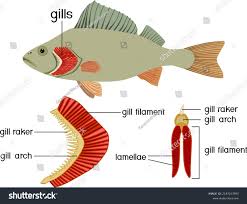Animal Diversity
1/12
Earn XP
Description and Tags
Chp 8
Name | Mastery | Learn | Test | Matching | Spaced |
|---|
No study sessions yet.
13 Terms
what is the dorsal side of an animal?
the top of an animal with radial or bilateral symmetry
what is the ventral side of an animal?
the underside, or bottom, of an animal with radial or bilateral symmetry
what is the anterior end of an animal?
the front, or head, of a bilaterally symmetrical animal
what is the posterior end of an animal?
the rear, or tail end, of a bilaterally symmetrical animal
how do scallops:
preform gas exchange?
avoid predation?
obtain food?
reproduce?
have locomotion?
what are their sensory organs?
through gills
they have hard calcium carbonate shells secreted by mantle
- swim short distances in zig-zag patterns
- jump-filter feeders → move water of labial palps that are ciliated structures that sort food particles and guide into mouth
Broadcast spawners (release gametes into the water)
- external fertilizationswim → suck water through values and out near their hinge
- jump → rapidly opening/closing shelleyespots in outer margin of shell → detects changes in light
how do crabs:
preform gas exchange?
avoid predation?
obtain food and digestion?
reproduce?
have locomotion?
what are their sensory organs?
gills
- long feathery filaments around central axis
- gill rakers to clean/facilitate water movement
- All located in gill chambercarapace → exoskeleton made of chitin
- eyes to see
- claws for protectionUse claws to move food into mouth
- specialized mouthparts
- Cardiac stomach → tooth like structures grind particles until small enough to be absorbedUse claws to compete/attract
- internal fertilization
- smaller gonads
- fertilized eggs are stored on females abdomenlegs for crawling/swimming
eyes on separate stalks
how do sea urchins:
preform gas exchange?
avoid predation?
obtain food?
reproduce?
have locomotion?
what are their sensory organs?
tube feet and water vascular system
- gills surrounding mouthmoveable spines (may be poisonous)
aristotle’s lantern → hard plates, stick out of oral end, which they use to scrape algae off rocks
- herbivores
- then moves through the esophagus and into intestinebroadcast spawners
- external fertilizationmoveable spines
- tube feetdont have sensory organs
how do fish:
preform gas exchange?
avoid predation?
obtain food?
reproduce?
have locomotion?
what are their sensory organs?
buccal pumping → draws water into its mouth and over its gills
- Use gills and countercurrent exchange
- gas exchange occurs at gill filamentsseeing with eyes
- schooling behaviour
- speed and maneuverability
- colourationmouth/eyes
- Can be herbivores, carnivores, omnivores, or detritivores2 gonads
- Some species produce sperm/egg depending on whether they are male/female
- Some fish are hermaphrodites
- Can have internal/external fert, and some are broadcast spawners
- size of gonads reflect these differencesswim bladder → for buoyancy
- finseyes
Define gonads
Part of the reproductive system that releases egg or sperm
how do gonads relate to fertilization?
animals that have external fertilization (eg. scallops, urchins, some fish) and therefore need to have large amount of gametes in order to increase chances of reproductive success have larger gonads than those who have internal fertilization (crabs and some fish) and therefore can produce smaller amounts of gametes and still have reproductive success.
what are the parts of the gill chamber of crabs?
Long feathery filaments
Central axis
Gill rakers
what are gill rakers for in crabs?
for cleaning gills
for facilitating movement of water over gills

how many sets of legs do crabs have? what are they for?
5 sets:
1 set of chelipeds (claws)
3 sets of crawling legs
1 set of swimming legs